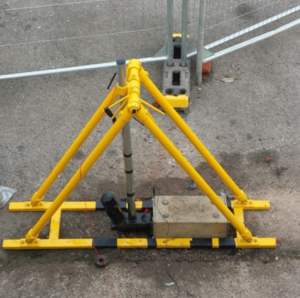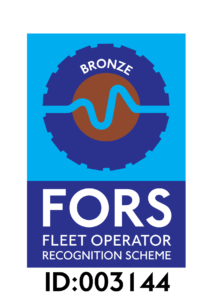The Seismic Moveout method: Making the impossible, possible
The Seismic Moveout method is a more accurate alternative to conventional downhole seismic testing, enabling elastic soil parameters at shallow depths (between ground level and 4m) to be derived, which has previously been very challenging and, in some cases, impossible.
 Joe Hobbs, Lankelma Technical Manager
Joe Hobbs, Lankelma Technical Manager
Small strain shear modulus is essential to understand the static and dynamic properties of soils at low strains and can be used for calculating settlement and dynamic loading effects, such as those experienced by earth structures on railway networks.
The seismic cone
The 15cm2 seismic cone comprises a piezocone unit with a seismic receiver above, which is pushed into the ground and stopped at 1m intervals to measure shear wave velocity and build-up a small strain stiffness profile.
The cone has an accelerometer-based receiver, rather than a more conventional geophone system. This has a higher sensitivity, with a larger frequency response and less P-wave noise interference than a geophone system, delivering better quality data and to considerably greater depths. Higher data quality ultimately means that interpretations are far more accurate, which in turn means design can be improved.
The Seismic Moveout method
It is common during conventional downhole seismic testing to minimise the distance between the source and the receiver. This minimises the refraction of inclined shear wave paths, which means analysis can assume a straight travel path.

Conversely, the Seismic Moveout method aims to maximise the distance between the source and the receiver, accounting for refraction in the calculation of the travel path, using a simple algorithm in Baziw, E (2002), Derivation of seismic cone interval velocities utilizing forward modeling and the Downhill Simplex Method”, Can. Geotech. J., 39(5), pp.1181-1192.
The larger distance between the source and the receiver reduces the influence of arrival time uncertainty, by lengthening the travel path and travel time in shallow layers. Near-field noise caused by the acoustic wave close to the source is also reduced, as is ‘rod string noise’ generated by the transmission of elastic waves through the CPT rods.
The method is equally well-suited to nearshore seismic testing from a jack-up platform, where flexibility in the source positioning – such as using an underwater hammer – can vastly improve set-up efficiency.
As a result, the method delivers more accurate shear wave velocities and enables elastic soil parameters to be derived at shallow depths. It also gives more flexibility on sites with difficult access, as the source can be located away from the rig and to the front or rear of a CPT truck.
We have used the Seismic Moveout method, together with a newly developed constant energy seismic source hammer, on a number of projects, to obtain highly repeatable source waves for analysis and calculation of seismic damping parameters, which are often critical at shallow depths.
Seismic cone testing is suitable for investigating a wide range of environments. This versatility, together with improved data quality, means it is a great addition to the site investigation contractor’s armoury.
We’re here to help
We are always looking at new ways to help clients and partners, so please get in touch if you want to discuss how we can work together to share ideas and develop solutions to your geotechnical challenges.




